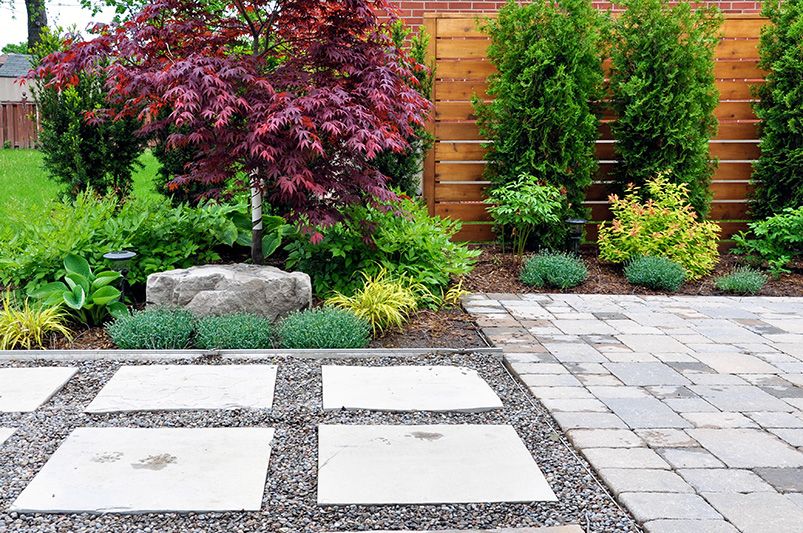
Transform Your Outdoor Space: Winter Landscaping Must-Haves
Published: 02/10/2024 | Updated: 29/09/2024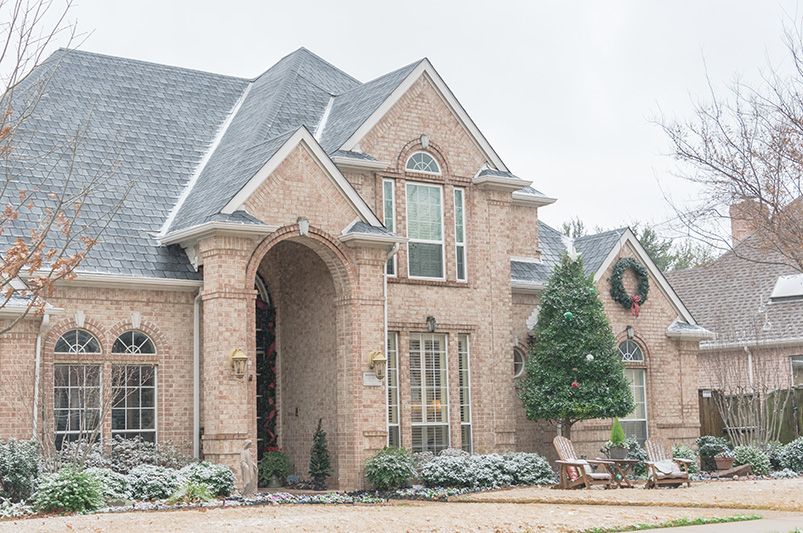
Key Highlights
- Embrace winter's beauty: Enjoy a vibrant outdoor space even during colder months.
- Strategic planting: Select hardy plants, evergreens, and those with colorful berries.
- Hardscape elements: Incorporate patios, walkways, and retaining walls.
- Outdoor lighting: Create ambiance and extend the usability of your outdoor space.
- Winter maintenance: Protect plants with mulch and prune for healthy spring growth.
Introduction
Often, when cold weather arrives, we stop using our outdoor space. They are left untouched until spring. But with some planning, you can enjoy a beautiful winter landscape all season long. To change your outdoor space for winter, choose plants that do well in colder temperatures. Also, add design elements that look good, even when it snows.


Essential Winter Landscaping Elements for Transforming Your Outdoor Space
Creating a beautiful winter landscape means looking beyond the usual spring and summer flowers. You should think about using plants with colorful bark or berries that stay interesting all year long. Hardscaping is also important. It adds shape and looks nice when leafless trees and plants are bare.
If you choose the right mix of plants, hardscaping, and outdoor lighting, you can make a lovely outdoor space. This space will be appealing during the winter months and will look great from inside your home.
1. Selecting Hardy Plants for Winter Beauty
While it may seem odd to plant in the colder months, picking the right plants helps your landscape not just survive but thrive in winter. Look for types of plants that are tough in cold weather and have special features. These could include colorful bark, berries, or evergreen leaves.
Think about plants like Holly, which has bright red berries, or Winterberry, known for its bright red, orange, or yellow berries. Dogwood trees have beautiful bark in colors like red, yellow, or orange. Some Birch trees can show off lovely white or silver bark that brings style to the winter scene.
Choosing plants that can handle winter gives you enjoyment in your outdoor space all year round. They add color and interest when other plants are gone, making a focal point in a bare yard. Plus, by planting in the fall, you give the roots time to settle in before the ground freezes. This leads to strong growth when spring comes.
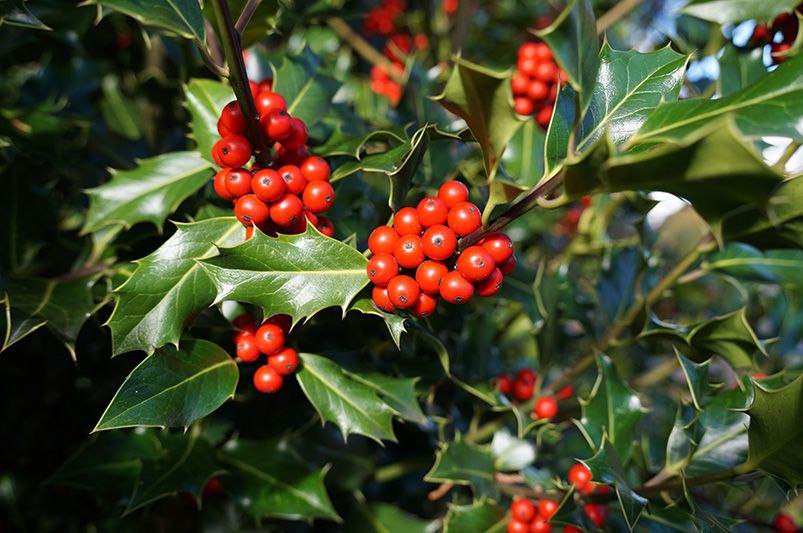
2. Incorporating Evergreen Varieties for Year-Round Greenery
One of the easiest ways to keep a beautiful winter landscape is by using evergreen plants. Unlike deciduous trees and shrubs that lose their leaves, evergreens stay green all year. They add life and color, even in the coldest months. Evergreens make a great background for other seasonal decorations.
When picking evergreen trees and shrubs, think about their size and shape once they grow up. It's important they fit well in your current landscape. Good choices for cold areas are Spruce, Fir, and Pine trees. These tall evergreens create a grand look in your winter garden.
In addition to trees, add smaller evergreen shrubs like Boxwood, Holly, or Yew. They help define borders and paths. The mix of evergreen leaves in different colors and textures keeps your landscape looking great all year.
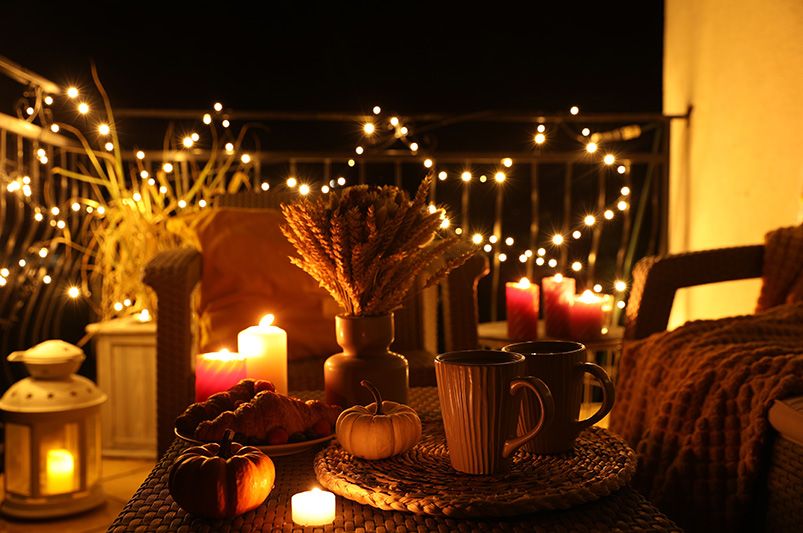
3. Adding Decorative Outdoor Lighting for Longer Nights
As the days get shorter and it gets dark earlier, outdoor lighting becomes very important. It helps with safety and makes your winter landscape look nicer. Good outdoor lights can show off the lovely parts of your winter garden. This creates a cozy and magical feeling.
Think about putting path lights along your walkways and driveways. They will light up the paths and make a friendly entrance. Uplighting trees and shrubs from below makes them look dramatic and brings out their unique shapes and textures. Using spotlights on special features like sculptures or architectural details can give some amazing visual effects.
Here are some outdoor lighting ideas to think about:
- String lights: Wrap them around tree trunks or hang them on fences for a warm, festive glow.
- Lanterns: Place them on steps or along walkways to add a charming touch.
- LED spotlights: These energy-saving lights can be adjusted to shine on specific features accurately.
4. Using Hardscaping to Create Durable, Weather-Proof Areas
Plants are an important part of any landscape. However, hardscaping elements are just as important, especially in places with harsh winters. Patios, walkways, retaining walls, and fire pits add to living spaces. They also provide structure and interest all year round.
Using materials such as natural stone, brick, or concrete is best. These materials last long and can handle freezing temperatures. A well-placed patio creates a space for outdoor furniture. You can enjoy it during the colder months with a fire pit or outdoor heaters. Stone or gravel walkways help you move around when it's snowy or icy. They also make the landscape look good.
Adding hardscaping elements to your landscape design keeps it functional and attractive year-round. These strong features act as anchors. They give your outdoor space definition and beauty, even when other plants are not active. This makes your outdoor area enjoyable, even during the winter months.
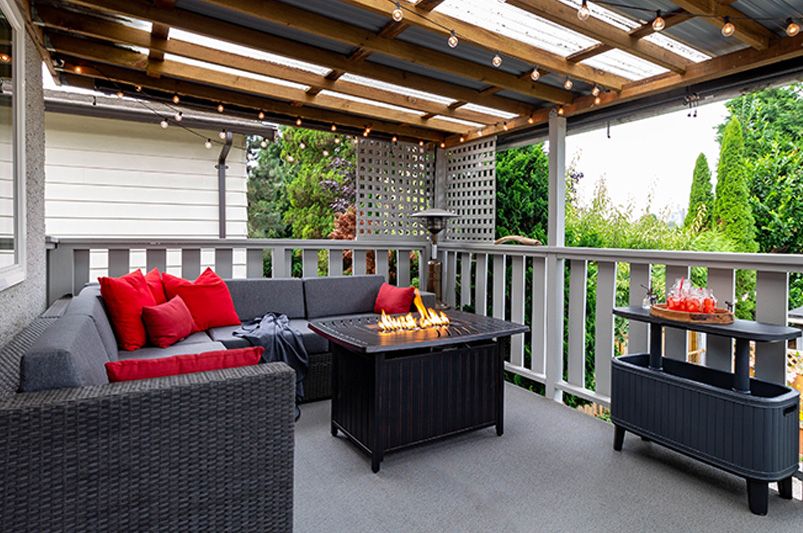
5. Investing in Quality Outdoor Furniture Resistant to Winter Weather
Just because the weather gets cold doesn't mean your outdoor furniture must go away. If you buy good outdoor furniture that can resist cold and wet conditions, you can still enjoy your winter landscape. Look for strong materials like powder-coated aluminum, teak, or resin wicker. They can handle the weather and need little care.
You can also make your patio more cozy with weather-resistant cushions, throws, and an outdoor rug. Arrange the furniture to create nice conversation spots around a fire pit or outdoor fireplace. This will give you warmth and a nice atmosphere.
When you choose furniture made for outdoor use, it will last longer and handle winter weather better. A patio set with comfy seats will get you to spend time outside. You can enjoy the beauty of your winter landscape and breathe in the fresh, crisp air.
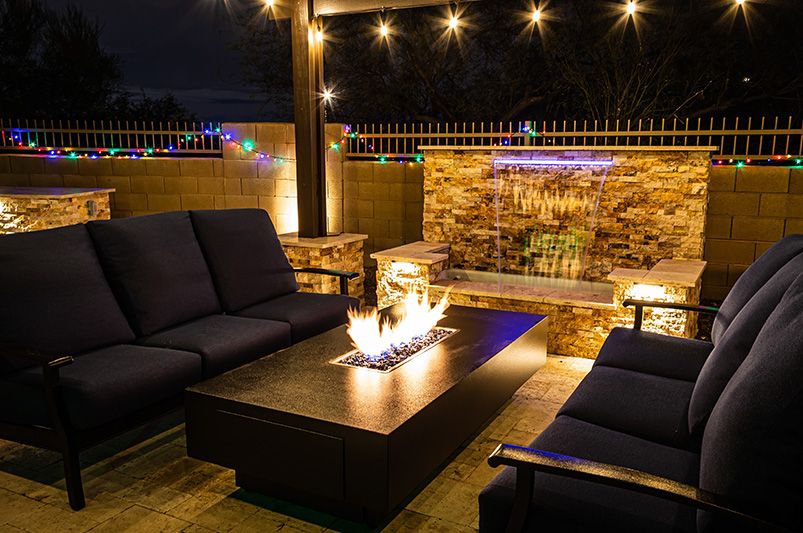
6. Implementing a Winter-Friendly Water Feature
The sound of running water can bring peace to any scene, including winter landscapes. While regular fountains and waterfalls might stop working in cold weather, some water features can make your winter place feel more special.
One good choice is a bubbling rock fountain. It keeps water flowing in a small area, which helps stop thick ice from forming. The soft noise of water flowing over the rocks creates a calm atmosphere, and you can see beautiful ice crystals forming, making the area even nicer.
You can also think about a heated birdbath. When it’s cold, birds often struggle to find water that is not frozen. A heated birdbath can draw birds to your yard, adding some life and movement to your winter landscape.
7. Choosing Outdoor Art that Withstands the Elements
Extending your decorating style to your winter landscape with the right outdoor art can make it special and personal. The key is to pick pieces that match your surroundings and can handle harsh winds, colder temperatures, and snow or ice.
Sculptures made from materials like metal, stone, or durable resin are good choices. They can stand up to bad weather without getting damaged. Look for sculptures with interesting shapes, textures, or colors that pop against your winter garden. Try to place these sculptures where they can be focal points. This will add a nice artistic touch to your landscape.
Besides sculptures, you can use other weather-resistant decor to brighten your outdoor space in winter. For example, colorful birdhouses, strong wind chimes, or a pretty trellis can make the area visually appealing.
Maximizing the Aesthetics of Your Winter Landscape
To make your winter landscape look great, focus on the details. Think about how colors, textures, and shapes work together. You can use the contrast of white snow with colorful berries or look at the unique bark on trees.
Also, see your winter landscape as a blank canvas. Use this chance to play with outdoor lights and decorations. This can help you create a warm and charming feel. Enjoy the beauty of the season by highlighting the natural features of your winter garden.
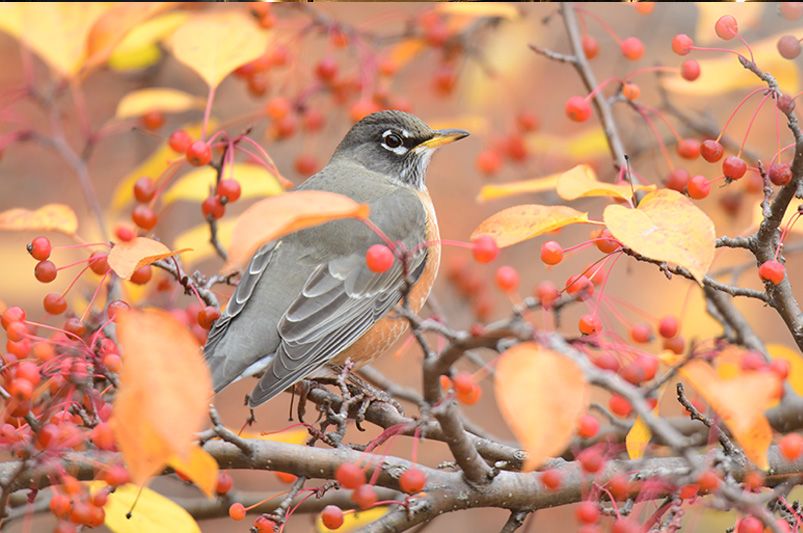
8. Creating Visual Interest with Berries and Bark
As many plants lose their leaves and flowers go away, the beauty of berries and bark stands out in the winter landscape. Picking plants that have colorful berries or unique bark adds a fun look to your garden.
Trees like Crabapples, Hawthorn, and some kinds of Holly keep their bright red berries all winter. This gives a nice pop of color against the snow. These berries not only beautify your yard but also bring in birds and other wildlife, adding life to the winter garden.
Also, the bark of some trees becomes beautiful in winter. Paperbark Maple has peeling bark that shows off cinnamon and brown colors, while River Birch has creamy white bark that peels to show salmon-colored layers. These trees add striking textures and looks to your landscape. Adding these features gives focus and keeps your garden interesting even when other plants are resting.
9. Planning for Snow and Ice: The Role of Strategic Landscaping
While snow can look beautiful, too much of it and ice can cause problems for your garden. Using smart landscaping ideas can help protect your outdoor space from snow and ice damage. It also makes sure your yard looks nice and works well.
When choosing plants, pick those that grow upright. This way, their branches won’t break from heavy snow. Stay away from delicate plants in spots where there's a lot of foot traffic or snow buildup. Instead, choose tougher plants that can handle the weight of snow better. Also, make sure your walkways and driveways are wide enough so you can easily clear snow and move safely.
Good drainage is key to stopping ice from building up and harming your plants and hard surfaces. Make sure slopes guide water away from buildings and planting areas. You might want to install drainage systems to help with extra water. These steps can reduce frostbite risks in plants. They also help make your outdoor space safer and more enjoyable during winter.
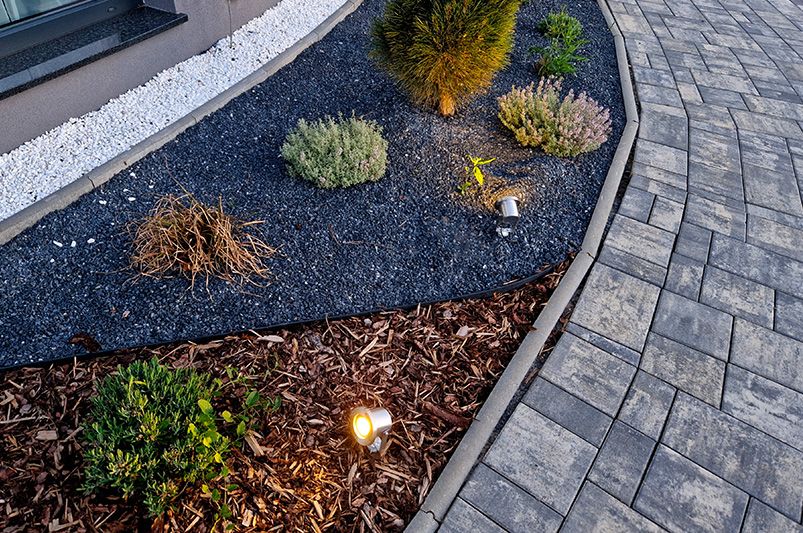
10. Utilizing Mulch for Plant Protection and Visual Appeal
Mulch is important for keeping your landscape safe all year, especially in the cold winter months. A layer of mulch acts like a warm blanket. It keeps soil temperatures steady, holds moisture, and protects plant roots from extreme changes in temperature.
Putting a layer of mulch around the base of your trees, shrubs, and perennial beds can prevent the ground from freezing and thawing too much. This helps reduce damage to the roots. Plus, mulch helps stop weed growth. Weeds compete with your plants for moisture and nutrients, even in winter.
Besides being useful, mulch also makes your landscape look nice. You can pick from different types of mulch, like shredded bark, wood chips, or pine needles. Each type adds a unique texture and color to your winter garden design. The right mulch not only improves the look of your garden but also gives your plants important protection.
Practical Aspects of Winter Landscaping
Creating a beautiful winter landscape means choosing the right plants, setting up hardscaping, and adding decorative touches. It is also very important to keep up with maintenance to keep your outdoor space healthy and happy. Winter brings its own challenges. You need special care to help protect plants from the cold and get them ready for spring.
Using the right pruning methods, giving fertilizer on time, and watering in winter are key. By focusing on these simple tasks, your winter landscape can stay bright and thrive when warmer weather comes.
11. Essential Winter Maintenance Tips for Plants and Lawn
Winter gives you a break from mowing and watering your lawn. However, some care is still needed to keep it healthy and ready for spring. As it gets colder, grass goes dormant. This is a good time to deal with problems like packed soil and not enough nutrients.
One important task is aeration. Using a core aerator in fall reduces soil compaction. This helps water and nutrients reach the roots better. Also, putting down a slow-release fertilizer in late fall gives needed nutrients through winter. This helps the roots grow well and makes your lawn turn green quicker in spring.
Pruning is another important winter task. While trees lose their leaves, it is a great time to cut out any dead, sick, or crossing branches. Trimming back big shrubs keeps them looking nice and helps them grow thicker in spring. For flowering shrubs like lilacs and forsythias, wait until they bloom in late winter or early spring to prune. This will help them produce more flowers next year.
12. Preparing Your Outdoor Space for Spring
As winter fades and spring comes, it's time to get your outdoor space ready for new growth. Cleaning up winter debris and adding nutrients to the soil will help create a lively garden full of blossoms and vegetables.
Start by picking up leaves, twigs, and any debris left from the winter months. Remove dead annual plants from flower beds and cut back perennials to make room for new growth. Mix in compost or aged manure to improve the soil's drainage and give it back the nutrients it needs for planting.
If you want to grow a vegetable garden, early spring is an excellent time to start seeds indoors. Get seed trays filled with a seed-starting mix and plant seeds at the right depth and spacing. Ensure they have enough light, moisture, and warmth to help them sprout and grow strong.
Conclusion
Winter landscaping gives you a great chance to improve your outdoor space all year long. You can use tough plants, evergreens, lights, hard surfaces, and strong furniture to make a beautiful winter scene. Think about adding water features and outdoor art that are good for winter to make it even more charming. With smart planning and care, your winter oasis can not only live but grow well. Don’t forget to post about your changed outdoor space on social media. This will help inspire other people in their winter landscaping projects. Enjoy the beauty of winter in your outdoor space!
Frequently Asked Questions
What are the best practices for winterizing outdoor plants in the United States?
Protecting plants from cold weather is very important. You should put a layer of mulch on your plants. This helps insulate them against root rot, especially for evergreens. Make sure to water your plants deeply before the first frost. Also, cover any vulnerable plants with burlap for extra protection.
How can I ensure my outdoor lighting is both beautiful and functional during the winter?
Use outdoor lighting ideas to brighten up long nights and make your beautiful winter landscape stand out. Mix path lights for safety with spotlights on trees or sculptures for an eye-catching effect. Choose LED lights to save energy during cold weather.
Need Assistance for a Complete Landscape Makeover?
Shrubhub’s landscape design packages can significantly transform the lives of homeowners by delivering customized, professional landscaping plans tailored to their unique space and personal style. With the ease of online collaboration, you are guided step-by-step through a design process that fundamentally reshapes your outdoor environment. The result is an aesthetically pleasing and functional outdoor living area that maximizes the potential of your property.



